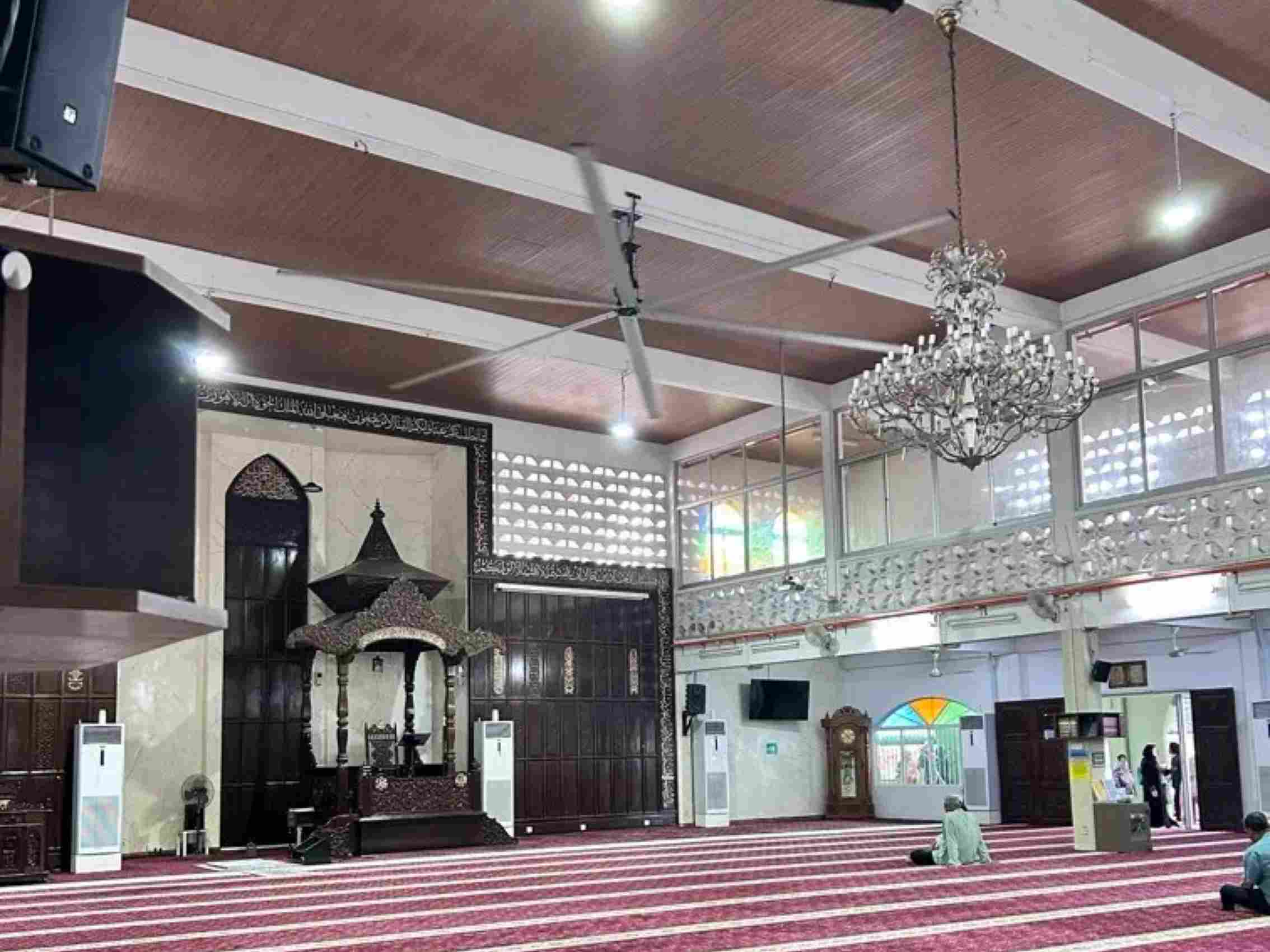Massive Fan-HVLS Industrial Fan
A massive fan, often referred to as an HVLS (High Volume Low Speed) fan, is a large-diameter fan designed to move substantial volumes of air at a low rotational speed. With diameters ranging from 2.4 meters (8 feet) to 7.3 meters (24 feet) or more, these fans are engineered to create widespread airflow in expansive spaces such as factories, warehouses, gymnasiums, and agricultural facilities.
Key Characteristics of Massive Fans
Large Diameter
- Typically spans between 2.4 meters to 7.3 meters or larger.
- Capable of covering areas up to 1,000-1,500 square meters with a single unit.
High Air Volume, Low Speed
- Operates at low rotational speeds (20-70 RPM), producing a gentle but powerful breeze.
- Creates a steady airflow that can replace multiple smaller fans.
Energy Efficiency
- Consumes minimal power—usually between 0.8 kW to 1.5 kW—allowing for significant energy savings compared to traditional cooling methods like air conditioning.
Durable Materials
- Constructed from high-strength materials such as aluminum alloy or galvanized steel for long-lasting performance.
- Resistant to corrosion and wear, even in challenging industrial environments.
Quiet Operation
- Advanced motor and aerodynamic blade designs ensure low noise levels, making them suitable for quiet environments like offices or gymnasiums.
How Does a Massive Fan Work?
Massive fans utilize aerodynamic blades to move large volumes of air at a low velocity. The slow-moving, broad airflow creates a phenomenon called destratification, which equalizes temperature layers in a space. By mixing warm air trapped near the ceiling with cooler air below, massive fans improve overall air circulation and reduce energy consumption.
Applications of Massive Fans
Industrial Facilities
- Provides effective cooling in large factories, manufacturing plants, and distribution centers.
Agricultural Use
- Improves air quality and regulates temperature in livestock barns, poultry farms, and greenhouses.
Commercial Spaces
- Enhances ventilation in gyms, event venues, and retail centers.
Warehouses and Storage Facilities
- Prevents condensation and protects stored goods from humidity or temperature fluctuations.
Public Spaces
- Offers ventilation in airports, train stations, and sports arenas.
Benefits of Using Massive Fans
Improved Comfort
- Delivers consistent air movement, reducing hot spots and creating a comfortable environment.
Energy Savings
- Cuts cooling costs by reducing the reliance on air conditioning systems.
- Can work in conjunction with HVAC systems to optimize temperature control.
Enhanced Air Quality
- Circulates fresh air, reducing odors, humidity, and airborne contaminants.
Versatility
- Suitable for various settings, from heavy-duty industrial facilities to public venues.
Environmentally Friendly
- Reduces energy usage and contributes to sustainability efforts.
 New Year Holiday Notice
New Year Holiday Notice
 Large Ceiling Fans: The Soluti
Large Ceiling Fans: The Soluti
 Enhancing Public Comfort with
Enhancing Public Comfort with
 Fall Prevention Measures for L
Fall Prevention Measures for L
